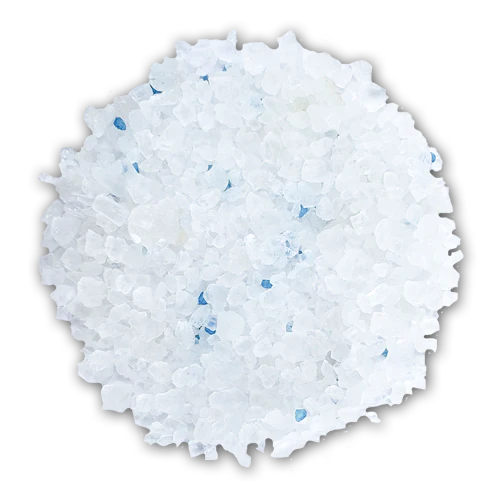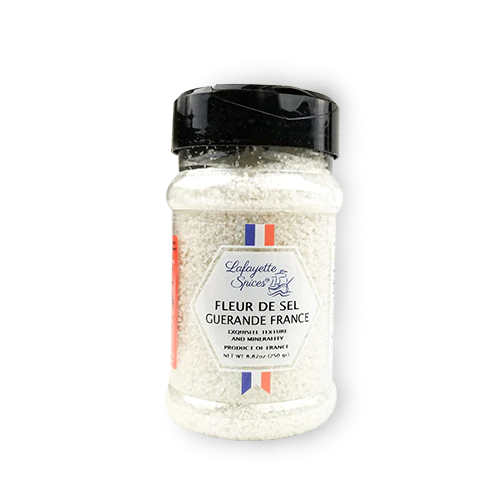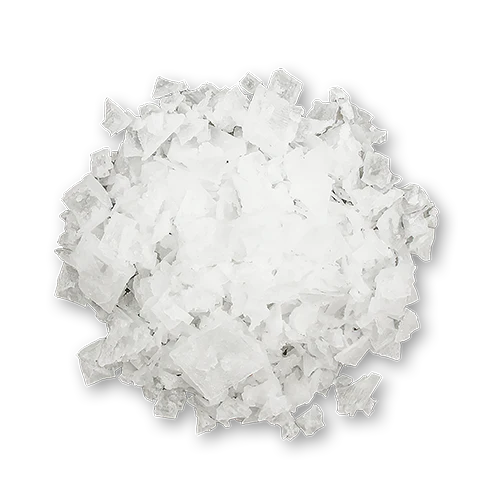
The Pink Powerhouse: Secrets and Uses of Pink Peppercorns
Pink Peppercorns are getting started for a flavorful dance off with your taste buds. These pink powerhouse aren't just your run-of-the-mill peppercorns. They're the vibrant rebels of the spice world. Adding a pop of color and a dash of fruitiness to your culinary adventures.
Need a quick change to the monochrome world of regular pepper? Well embrace the vibrancy of pink spice. These little spheres of piquant delight aren't afraid to break the spice mold and bring a touch of whimsy to your culinary escapades.
Join us on this adventure as we unravel the mysteries behind these blushing flavor bombs. From the sassy pop of their color to the intriguing dance on your taste buds, these peppercorns are about to become your new kitchen confidante.
What is the history of Pink Peppercorns?
The delicate and vibrant Pink Peppercorns stand as a testament to the rich culinary tapestry. Hailing from the Peruvian pepper tree, Schinus molle. The journey of sweet peppercorns is a fascinating exploration. From their indigenous roots in South America to the global appreciation they enjoy today. Early on, they recognized not only the unique flavor but also the medicinal properties.
-
European Discovery:
The allure of pink peppercorns captivated European explorers during the Age of Discovery. In the 15th century, Christopher Columbus encountered these exotic berries during his voyages to the Americas. The vibrant hue and distinct flavor intrigued European palates. And pink peppercorns soon found their way into the spice cabinets of the Old World.
-
The Misnomer:
Despite their popularity, pink peppercorns have often been subject to a misnomer. The name itself implies a relation to true peppercorns. But botanically, they are more closely linked to nuts. This botanical distinction became clearer over time. Helping to dispel the misconception that pink peppercorns are simply another variety of traditional pepper.
-
Culinary Renaissance:
The true potential of sweet peppercorn came to the forefront during the culinary renaissance of the late 20th century. Chefs around the world began to embrace the versatility of these berries. Experimenting with their use in both sweet and savory dishes. This newfound appreciation elevated pink peppercorns from a novelty to a staple in gourmet kitchens.
-
Global Cultivation:
While the Peruvian pepper tree is native to South America, the cultivation of pink spice has expanded to various regions with suitable climates. Madagascar, in particular, has become a significant producer of high-quality pink peppercorns. The unique terroir of the island contributes to the distinct flavor profile of Malgache Pink Peppercorns. Prized for their fruity and sweet notes.
-
Harvesting and Selection:
The meticulous process of harvesting and selecting pink pepper plays a crucial role in maintaining their quality. At Lafayette Spices, for instance, the commitment to excellence is reflected in the hand-selection of each berry. Only those exhibiting the ideal color and roundness make the cut, ensuring that the essence of the spice is preserved in its purest form.
How are Pink Peppercorns Different? Secrets Unveiled

The secrets of pink peppercorns lie in various things. Such as, botanical origin, distinctive flavor profile, vibrant color, softer texture, and versatility in culinary applications. Understanding these aspects can help you make the most of this unique spice in your kitchen.
- Pink peppercorns, technically not belonging to the true pepper family. They are derived from the dried fruit of the evergreen tree Schinus Molle. This botanical distinction sets them apart from traditional peppercorns such as black, white, and green. The Schinus Molle tree is native to Madagascar, adding a unique geographic element to their origin.
- These peppercorns flourish in tropical and subtropical climates, with Madagascar being a notable region for their cultivation. The Schinus Molle tree thrives in well-drained soil, often found in coastal areas.
- The harvesting process involves plucking the ripe berries, which are then dried to enhance their flavor profile. This meticulous drying process contributes to the surprising sweetness and delicate nature of the berries, making them distinct from the traditional peppercorns.
- The culinary applications of pink peppercorns differ significantly from black, white, and green peppercorns. While the latter are known for their robust and pungent flavors, pink spices offer a surprising sweetness with subtle spice. The berries are tender and delicate, making them ideal for consumption whole or coarsely crushed.
- They are often used as a decorative and flavorful element in dishes, adding a burst of color and a unique taste profile.
Unlike true peppercorns, they are better suited for dishes that don't involve prolonged cooking, preserving their delicate flavors. This makes them a popular choice for salads, garnishes, and various culinary presentations. Showcasing their versatility in both sweet and savory applications.
What Flavor Do Pink Peppercorns Add?
Pink peppercorns impart a distinctive and intriguing flavor profile to dishes. Their aroma is characterized by a subtle sweetness, reminiscent of Juniper berries, with hints of citrus and floral notes. The fragrance is delicate yet complex, making pink peppercorns a unique addition to both savory and sweet culinary creations.
The texture of pink peppercorn also plays a role in their overall contribution. These peppercorns have a softer and more delicate texture compared to their black counterparts. Providing a pleasant fruity crunch that adds a layer of complexity to dishes.
Pink Peppercorn vs. Black Peppercorn: A Comprehensive Exploration
Among the various types of peppercorns, pink and black peppercorns stand out with distinct flavors, culinary applications, and nutritional profiles. This comprehensive exploration aims to unravel the differences between pink and black peppercorns. Shedding light on their unique characteristics.
Criteria |
Pink Peppercorns |
Black Peppercorns |
| Origin | Origin from the Madagascar, Schinus Molle | Harvested from the Piper nigrum plant |
| Flavor Profile | Fruity, sweet, and notes of Juniper berry | Pungent, earthy, and robust |
| Appearance | Soft, wrinkled, and pinkish-red | Hard, round, and dark brown to black |
| Culinary Uses | Ideal for meats, seafood, and desserts | Versatile; used in almost all savory dishes |
| Processing | Often freeze-dried or air-dried | Sun-dried and fermented |
| Heat Level | Sweet, not spicy | Moderate to high |
| Pairing Recommendations | Complements everything, from sweet to savory dishes. | Enhances the flavor of savory dishes |
Why Should You Have Pink Peppercorns in Your Kitchen?

Pink Peppercorns has it all when it comes to flavoring your dishes. It’s a perky little twist to your regular peppercorns.
It’s a delightful addition to your kitchen for several reasons, both culinary and aesthetic. Here are some reasons why you might want to consider having pink peppercorns in your kitchen:
Unique Flavor Profile:
Pink peppercorns have a distinct and unique flavor that comes with a sweet and fruity undertone. This adds a layer of complexity to your dishes, making them more interesting and flavorful.
Pairing Possibilities:
The compatibility of sweet pink pepper with various ingredients opens up a world of pairing possibilities. Pink spices can be used in a variety of dishes, both savory and sweet. They pair well with poultry, fish, salads, and desserts. This can be particularly beneficial when you want to enhance the presentation of salads, sauces, or other light-colored dishes. Their versatility makes them a handy spice to have in your kitchen. Allowing you to experiment with different flavor combinations.
Health Benefits:
Like black and white peppercorns, sweet pink pepper come from the pepper plant and may offer some health benefits. They contain antioxidants and may have anti-inflammatory properties. However, it's essential to note that they are not a substitute for other nutrient-rich foods.
Gourmet Touch:
Adding sweet peppercorns to your kitchen arsenal can give your dishes a gourmet touch. Their unique appearance and flavor make them a favorite among chefs looking to elevate the culinary experience.
Complement to Other Peppercorns:
Pink peppercorns can be used in combination with black, white, or green peppercorns to create custom pepper blends. This allows you to tailor the heat and flavor of your pepper to suit different dishes and personal preferences. We have Five Peppercorn Mix which has a beautiful blend of Black, White, Green, Pink and Mexican Allspice. It is the perfect mix for all your seasoning needs.
Culinary Creativity:
If you enjoy experimenting with flavors in the kitchen, pink pepper can be a fun ingredient to play with. Their unconventional taste can inspire culinary creativity and encourage you to try new recipes.
Conversation Starter:
Pink peppercorns are less common than their black counterparts, making them a conversation starter in the kitchen. Introducing unique and less familiar ingredients can spark curiosity and add an element of culinary exploration to your cooking endeavors.
Secrets and Uses of Pink Peppercorns in Cooking
The secrets and uses of sweet pink pepper in cooking extend far beyond the realm of conventional spices. Their sweet, fruity notes make them a versatile ingredient that enhances both sweet and savory dishes. From desserts that tantalize the taste buds to seafood and vegetable creations that celebrate freshness, pink pepper are a culinary gem waiting to be discovered.
The Sweet Symphony: Desserts and Pastries
Contrary to the conventional association of peppercorns with savory dishes, Pink Peppercorn is different. It goes well with desserts and pastries. Its inherent sweetness and fruity aroma make them the perfect companion for desserts.
Imagine a luscious vanilla panna cotta adorned with freshly sliced strawberries and a subtle hint of crushed pink spice. The marriage of creamy, sweet, and subtly seasoned flavors creates a celestial experience for the taste buds.
You can also adorn your favorite crème brûlée with sweet Pink Pepper. The aromatic essence of the peppercorns play a tantalizing dance with the rich custard. Leaving a lingering sensation that transforms a familiar dessert into a masterpiece.

Seafood and Vegetables: A Match Made in Culinary Heaven
Pink peppercorns are not only confined to the realm of sweets. Their versatility effortlessly weaves in savory creations as well. Especially when paired with delicate seafood and vegetables.
For dishes that celebrate the raw and fresh, such as ceviche and crudo, pink spice contributes a burst of floral and citrusy notes. The subtle crunch they provide adds a textural dimension, creating a delightful contrast to the tender seafood.
When it comes to vegetables, sweet pink pepper showcase their versatility with finesse. Raw spring vegetables like asparagus or palm find a perfect companion in the fruity undertones of these pink spices. Whether lightly crushed and scattered over a crisp salad. Or incorporated into a vibrant vegetable medley, pink spices add a nuanced layer of flavor that transforms ordinary into extraordinary.
Culinary Alchemy: The Art of Pairing
The art of culinary alchemy lies in the pairing of ingredients. Pink peppercorns are a masterstroke in this regard. Their ability to bridge the gap between sweet and savory seamlessly complement a myriad of dishes.
Consider experimenting with pink spices in unexpected pairings. Picture a honey-glazed pork tenderloin adorned with a sprinkle of crushed whole pink peppercorns. The pairings will create a harmony of sweet, savory notes. Alternatively, infuse them into a fruit compote to accompany a creamy goat cheese. Revealing a symphony of flavors that dance across the palate.
Pink Peppercorns: Myths and Facts Unveiled
In the world of culinary enchantment, few ingredients have sparked as much intrigue and controversy as pink spice. Despite their name, a tapestry of myths and misconceptions has woven itself around them. Dispelling common misconceptions. And embracing the nuanced attributes of these berries allows chefs and home cooks to unlock the full potential of sweet Pink Pepper.
Myth #1: Pink Peppercorns are True Peppercorns
The most prevalent misconception about pink peppercorns is that they belong to the same family as black, white, and green peppercorns. In reality, pink peppercorns hail from the Schinus genus and are not botanically related to true peppercorns (Piper nigrum). These berries come from the dried fruit of the Peruvian pepper tree. And providing a distinct flavor profile that sets them apart.
-
Fact #1: Botanical Distinction
Pink peppercorns belong to the cashew family, Anacardiaceae, and share their lineage with cashews and pistachios. Understanding this botanical distinction is crucial for appreciating the unique characteristics that sweet Pink Pepper bring to the table.
Myth #2: Pink Peppercorns are Overwhelmingly Spicy
Some shy away from these peppercorns due to the misconception that they are overwhelmingly spicy. Their dominant flavor profile is a delicate sweetness with fruity and floral notes. The misconception likely stems from the association with true peppercorns. But pink peppercorns offer a milder and more fruity taste.
-
Fact #2: Nuanced Flavor Profile
Expert perspectives on pink peppercorns highlight their nuanced flavor, combining sweetness and a subtle citrusy aroma. Chefs often leverage this unique profile to add depth and complexity to both sweet and savory dishes.
Myth #3: Pink Peppercorns are Toxic
A persistent myth suggests that pink pepper are toxic or can cause allergic reactions. This misconception likely arises from their relation to cashews, which can trigger allergies in some individuals. However, pink peppercorns themselves are generally safe to consume for most people.
-
Fact #3: Generally Safe for Consumption
Pink peppercorns, when sourced from reputable suppliers, are safe for consumption. However, those with nut allergies should exercise caution, as cross-contamination during processing and packaging may occur.
Myth #4: Pink Peppercorns are Only for Garnish
Many perceive this peppercorn as mere decorative elements. Suitable only for garnishing dishes. While their vibrant color does make them visually appealing. Their true value lies in their ability to enhance and elevate the flavor profile of a wide range of culinary creations.
-
Fact #4: Culinary Versatility
Expert chefs recognize pink spice for their versatility, incorporating them into desserts, savory dishes, and spice blends. Their unique combination of sweet and fruity notes makes them a prized ingredient in the culinary world.
Myth #5: All Pink Peppercorns Are the Same
Not all pink peppercorns are created equal. Some may argue that there is no discernible difference between various sources of pink pepper. In reality, factors such as growing conditions, harvesting methods, and storage can significantly influence the flavor and quality of sweet peppercorns.
-
Fact #5: Quality Matters
Experts emphasize the importance of sourcing high-quality pink spice to fully experience their unique flavor profile. The freshness and purity of the berries can vary, impacting the overall culinary result.
For example at Lafayette Spices, our commitment to excellence is evident in our meticulous sourcing of premium Malgache Pink Peppercorns exclusively from Madagascar. Each berry undergoes a careful selection process. It ensures that only those exhibiting optimal color and roundness earn a place in our jars. We take pride in delivering a product of unparalleled quality. Where only the finest pink pepper berries make their way into our collection.
Conclusion:
In contemporary culinary circles, pink spice continues to enchant chefs and home cooks alike. Their ability to bridge the gap between sweet and savory dishes has solidified their place as a culinary treasure. From desserts and pastries to seafood and salads, pink peppercorns add a touch of magic. Inviting us to explore the depths of their nuanced flavor profile.
At the heart of this Pink Powerhouse narrative is the commitment to excellence exemplified by purveyors like Lafayette Spices. Pink peppercorns beckon us to embrace the unexpected. To celebrate the marriage of sweet and spicy. And to explore the infinite possibilities they offer.











